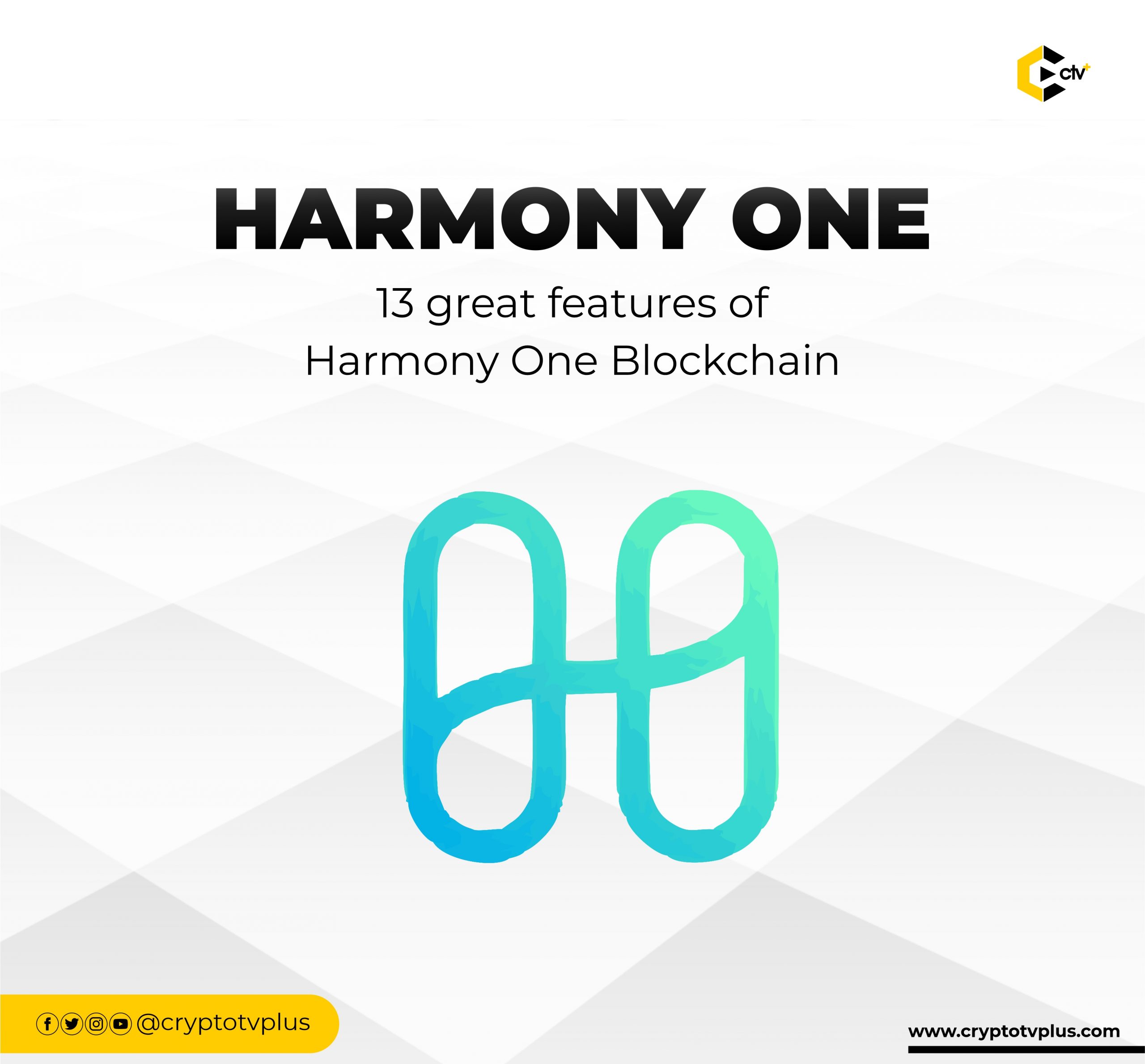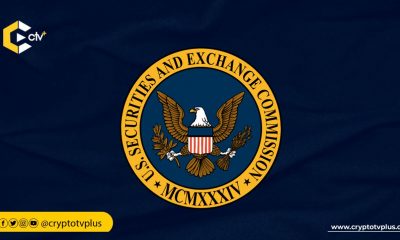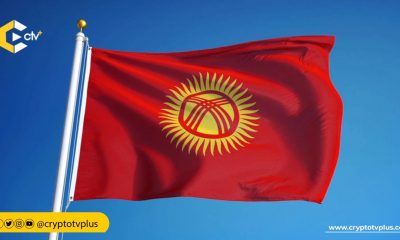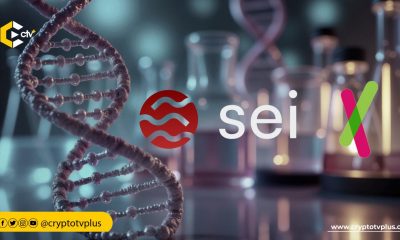FEATURED
Features of Harmony One Blockchain

Harmony One is a layer-2 protocol blockchain designed to enhance the creation of decentralized apps with a focus on scalability and faster, cheaper settlement.
In this post, we’ll explore features of the Harmony blockchain. Some are similar to what you’ll see for Ethereum based blockchains while others are not especially in terms of the combination and goals.
Attempts to address the trilemma of blockchain networks – even the “fourth” trilemma.
Most blockchain platforms are designed to be so efficient and not just as a cryptocurrency use case. For Bitcoin, that has been its major limitation. And others are still utility-based but traded as one of the strengths any network should have. This is called the trilemma of blockchain where a project is designed with security, decentralization, and scalability in view. Stephen, the CEO, also gave hints that Harmony will address what could be called the “fourth” trilemma – privacy.
Harmony blockchain is one of those blockchains designed to not compromise any of these attributes. Several structures have been designed to maintain all these functionalities like sharding; easy entry requirements to be a validator, just One token; the use of distributed randomness generation process to assign nodes that act as validators.
Energy-efficient
Validation of transactions in the blockchain system is one major reason it is energy-consuming. One of the biggest cases against Bitcoin again is its energy consumption. Although, some findings show that Bitcoin does not consume as much energy as projected. Thanks to the lighting network that is creating an easier ecosystem for users to enjoy.
Proof of Stake used by Harmony is one of the models that has made it energy efficient. They went ahead to use Effective Proof of Stake, which combines the positive attributes of PoW and PoS making it suitable for mining activities especially… since transactions are verified in seconds. Apart from the TPS, the transaction fee is also drastically lowered when compared with Ethereum.
Cross-chain capabilities
One of the best capacities of the Harmony blockchain is to share data across many blockchain networks be it a Proof-of-Stake or Proof-of-Work powered network. How? By enabling nodes on other networks to validate transactions. Horizon, a project launched in 2020 was targeted at making it seamless for assets to be transferred from one blockchain to another. Hence, encouraging interoperability.
According to the technical overview of the website, Horizon will aid the transfer-assets flow where assets can be locked on Ethereum and the equal amount of that asset is minted on Harmony or redeem-assets flow where a particular amount of a minted asset on Harmony is burned and the equal is unlocked on Ethereum. Leo Chen, VP of Engineering at Harmony, said in the press release: “We are living in a multi-chain world already and we are embracing the upcoming metaverse. The multi-chain world and the metaverse require inter-connected blockchains, not just the fungible tokens, but also non-fungible tokens. A bridging infrastructure may empower new kinds of dApps to be built, such as games that cross multiple chains.”
Cross-shard Communication
It is known to be the first blockchain to combine PoS and sharding. ‘”Sharding is a database partitioning technique used by blockchain companies with the purpose of scalability,” states Jake Frankenfield, “enabling them to process more transactions per second. Sharding splits a blockchain company’s entire network into smaller partitions, known as “shards.” Each shard is comprised of its own data, making it distinctive and independent when compared to other shards.'”
It is used to increase the speed of validation and reduce congestion in a blockchain network. From the official website, there are three sharding used in the Harmony blockchain:
- State Sharding
In Harmony, each shard maintains its own chain of blocks and state database. Therefore, the validators of each shard only need to store 1/N of the global state, where N is the number of shards.
- Network Sharding
Harmony’s validator network is also divided into shards where each shard involves a separate set of validators connected closely with each other and running consensus between themselves.
- Transaction Sharding
Transactions in Harmony blockchain are sent to and processed by a specific shard instead of all shards. This way, shards can process transactions in parallel which greatly improves the overall transaction processing capacity of the blockchain.
ONE-backed stablecoin
This is the press release from Harmony on 11 January 2021, concerning the release of the ONE-backed stablecoin: “Called the oneUSD, the on-chain Harmony stablecoin will be collateralized through the ONE token. Through the OINDAO, users will be able to deposit their ONE tokens and mint the oneUSD up to 160% collateralization rate, providing users a great way to leverage and transact, all the while allowing them to hold onto their beloved ONE assets!” That step increased DeFi activities (including swapping them for DAI or USDC) in the blockchain as users are looking for more stable assets, unlike most volatile cryptocurrencies.
Universal Basic Income proposal
This is a phenomenal project Harmony is trying to achieve. Thanks to Hakwan Lau who’s a neuroscientist and friend to Stephen Tse, founder of Harmony. The dream is to make anyone anywhere earn money without the structural barrier from traditional financial institutions. With this model, people can stake their cryptocurrency, carry out borrowing and lending, and earn up to 20% APY.
The Liquidity DAO
DAOs (Decentralized Autonomous Organisations) are one of the most important use cases of DeFi. They are set up to carry out specific goals with a decentralized system where no one person is fully in charge, and it’s permissionless for most of the models available. “The ONE Liquidity DAO (“Liquidity DAO”) is an open collective that exists as both an arm of the Harmony Protocol ecosystem, as well as a wing of the open-source Hummingbot Foundation,” says Micheal Feng.
The goal will be to provide liquidity on the Harmony blockchain and decentralize liquidity provision for the ONE token. These assets will be used to drive projects related to Harmony, Hummingbot, and human endeavors. For example, Harmony has pledged $500K (as part of a $2m proposal for four years) initial funding for the year 2022 to a Gnosis SAFE multisig.
Slashing for validators
It’s a common practice for slashing to be carried out in any system that uses EPoS mechanisms to function. It’s a way to deter validators from malicious behaviors, thereby maintaining the security of the blockchain. Harmony enforces this in such a way that “a validator temporarily loses his slot if he misses more than 1/3 of the blocks in an epoch; this unresponsiveness is due to nodes being offline, largely not malicious behavior and a validator loses at least 2% of the stake depending on how many slots are corrupted; this behavior is considered a malicious behavior,” according to the official website.
Dex SWOOP
This announcement went live in October 2020: “After launching the Horizon bridge to swap assets from Ethereum to Harmony, we are excited to announce that our community has launched a technology demo of a cross-chain DEX — Swoop. Swoop will enable the community to test out the seamless, high-speed, and low-fee user experience while exchanging assets in a non-custodial manner on Harmony.”
This will enable the community to participate in DeFi activities similar to Uniswap. So, you can add liquidity to any of the pools available in Swoop, trading and creating any asset pair that’s present on Swoop so easily. It’s advised that before users make use of the Swoop, they should explore the Horizon bridge by moving some assets from Ethereum to Harmony. Here’s what makes it more interesting, there’s no withdrawal fee to remove your liquidity just like Uniswap.
Target of 1 million transactions per second
Mikhail Karkhalev, an analyst at Capital.com, said this about the transaction rate of Harmony: “Harmony is an interesting project, if only because the developers plan to increase transaction processing speed to 1 million transactions per second in the near future, and to 10 million transactions per second in the long term.” Currently, it sits at 2000 TPS and quite low when compared with Visa and Fantom at 65,000 and 25,000 respectively.
However, there are plans to raise this to 1 million and more in the coming years, very close. Such plans will be possible by working on the transport network, consensus protocol, and system tooling of the network. Mr. Minh Doan responding to a Q&A session on this replied, “The number (about 10 million TPS) was mentioned in our first whitepaper because, by sharding, the TPS can be scaled together with the number of shards. Assuming one shard contributes 500 TPS on average, we can achieve 1 million TPS if we have enough machines to make 2,000 shards.”
ONE Wallet
Harmony, like other blockchain platforms, has a digital wallet for storing $ONE tokens as well as other assets. It can interoperate with other wallets like Metamask and Trust Wallet so that assets can easily be transferred from and to these platforms. The Wallet is designed as a browser extension that you can download and activate on a browser like chrome.
Crazy.ONE project
This is tagged as the first subdomain NFT of any blockchain project. It has the same function as unstoppable domains where you can get domain names that can also act as addresses. To buy one, you have to visit crazy.one. Monies paid for the domain are sent to a decentralized treasury controlled by the Harmony community. As more features and changes will be made on the site, the domains can act as a Wallet address. And because they are built on the blockchain, no censorship.
Another uniqueness of the service is that you can only rent the sub-domains for it more than one year at a time as of this writing. You can also allow your live Twitter feeds to be shown on it when you connect with your Twitter account.
DaVinci is back on Harmony
A marketplace for the trading creation and trading center for NFTs. You mint, sell and buy NFTs. For Harmony, they created the DaVinci marketplace to enable creators to explore the more than $40B industry. This automatically makes ONE the coin behind all transactions unlike OpenSea and Rarible using ETH. Remember that the EPoS mechanism that Harmony uses also makes transactions here so cheap to about $0.01. You wouldn’t want to see what the Ether version is. If you’re new in the NFT space and are scared of the price for Rarible and OpenSea, then jump in here and explore. Always remember, DYOR.
Harmony is also targeting a good goal that might make it one of the most suitable platforms. They want to create a Bitcoin bridge that will help Bitcoin holders earn good money on the Harmony blockchain. Remember, the cross-chain system mentioned earlier? The drive is to move beyond simpler blockchains and bring in Bitcoin fully. If this happens, then a lot will change in the ecosystem. The community of this project is capable of making this happen as a lot of funds have been made available to support deep research and development.
What do you think of this article? Share your comments below.

























Pingback: 13 Great Features of Harmony One Blockchain by Chuks Nnabuenyi Jr – CryptoTvplus Events: NFT, DeFi, Bitcoin, Ethereum, Altcoin Events
Pingback: 13 Great Features of Harmony One Blockchain – CryptoTvplus – China Digital Currency
Pingback: Harmony Price Prediction and Forecast: ONE Surge Continues as Outlook Improves - CrowdWisdom360
Pingback: Harmony Price Prediction and Forecast: ONE Surge Continues as Outlook Improves – Alt-Currency Earners Club
Pingback: Harmony Price Prediction and Forecast: ONE Surge Continues as Outlook Improves – Kimkia Crypto